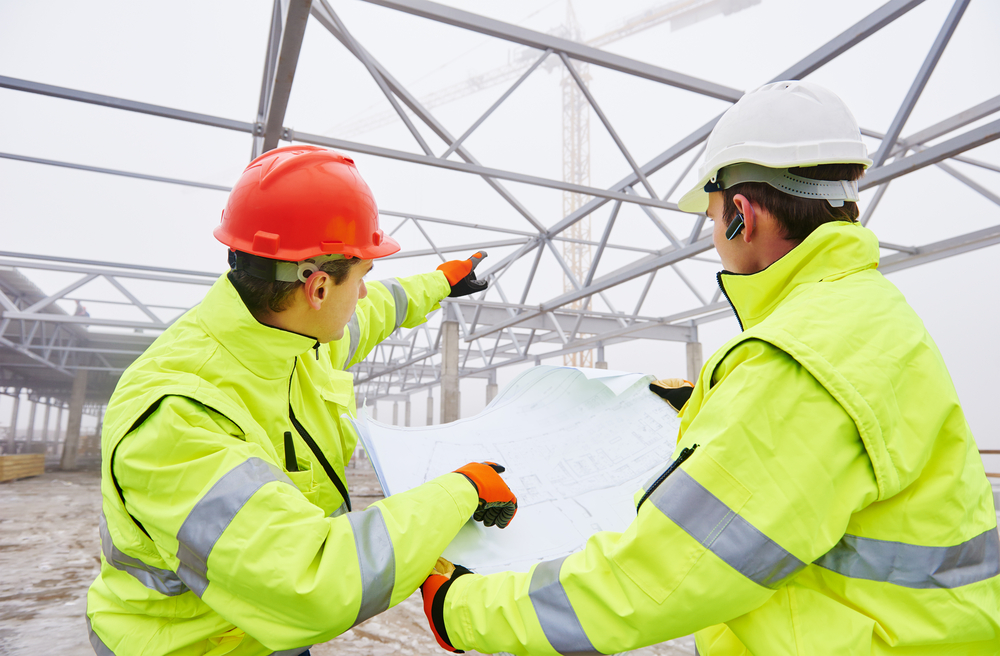Have you ever noticed that when your team works together and shares mutual trust, things tend to get done faster with fewer incidents? It’s not a coincidence. Studies and reports show that teamwork and trust are two critical yet often-overlooked facets of safety on the job site. Why? It all has to do with feeling engaged and connected on the job. When your workforce works together, they communicate better, they’re more likely to protect one another, and they go further to report risks.

Here are some specific reasons why this occurs:
- Teamwork Encourages an Open Dialogue –Team members feel safer when they feel that they can report incidents to their managers. Those in charge should always foster an open dialogue about all workplace matters, especially safety. If employees are disparaged or shamed for bringing up safety concerns, they will stop doing so, putting team members at risk. A team that feels secure will speak up when needed and encourage others to do the same.
- Teamwork Encourages Mutual Protection – In many industries, including construction and public utilities, working in pairs or groups is essential to the job. When certain team members are not engaged and don’t feel included, they’re less likely to take group safety seriously, potentially endangering co-workers. In short, trusting individuals tend to want to protect their fellow team members.
- Teamwork Builds Trust – Though we strive to make our job sites safer than they ever have been before, there are still some inherent risks of the job. However, many tasks within our industries require complete and total in-group trust in order to be carried out safely. One of the best ways to build confidence and encourage employees to take appropriate risks is to encourage team bonding, which will, in turn, help grow trust between participants.
- Teamwork Means Better Quality – You know from working on trusting, well-functioning job sites that when people get along and share a bond, the quality of the work is better. Not only is this good for the outcome of the project, but it’s also good for the safety of your team. Quality work is done right, with care, and focus on every task. This methodology can help reduce job site incidents.
How to Build Teamwork and Trust
For multiple reasons, keeping a healthy, happy workforce is critical to any industry. Not only will it keep workers safe and ably employed, but it will also help grow your bottom line as a company and ensure that you produce quality work. In fact, reports show that construction companies that take safety seriously are better able to contract new work, retain staff, and attract new employees. So, if you think these investments are frivolous, think again! A safe job site is a thriving one where employees are free to do their best work.

Since we know that safety is good for business, and teamwork is good for safety, it’s clear that companies need to focus on encouraging team-building on the job. But how do you do that? There are many ways, but here are some of the most effective:
- Treat Safety as a Priority –Too often, poor cultures of safety are fostered on worksites, leaving gaps in trust and teamwork. Having a negative safety culture is evident in the form of improper personal protective equipment (PPE) and a lack of reporting from crew members. Here are some of the simplest ways to prove to your workers that you care about their safety:
-
- Ensure employees have safety gear, such as reflective work shirts and protection for the eyes and ears, to build trust from the ground u Take it a step further and personalize your employee’s work gear by getting your company’s logo imprinted on all apparel pieces. This will help ensure full coverage and identification to keep your employees safe.
- Create an anonymous reporting system that allows employees to report risks, job site dangers, and hazards without any risk of retribution.
- Encourage employees to participate in safety trainings and inspections so they understand what facets of the job pose risks.
- Take inspections seriously and engage workers in the process. Aim to exceed voluntary standards rather than just keeping things up to code.
- Encourage Team Members to Speak Up –The fact of the matter is that your team members are the ones on the ground. They’re the ones who see and hear every minor risk and conflict. Whether through daily toolbox talks, feedback sessions, or anonymous reporting opportunities, you need to seek out information from team members and respond accordingly. Getting the information is only half the battle, though. You also have to think about how you respond to it. Take employee concerns seriously, escalate them when necessary, and always provide the proper safety gear if there is any concern there.
- Build a Strong ‘Company Culture’ –The “company culture” concept is trendy in tech and startup offices around the globe, but there’s plenty of reason to believe that it can bring some benefits to job sites, too. This concept essentially encourages creating a social network and bond among employees so that they might engage more with one another and their work. Simple activities such as after-work happy hour, company picnics, and group lunches can help build team members’ trust in one another while they’re not on the clock.

Investing in Teamwork and Trust
Building teamwork and trust among your employees is a great way to strengthen your process and even grow your business. But, unlike new equipment and new procedures, teamwork and trust often can’t be measured in graphs, dollars, or statistics. For this reason, they’re often not prioritized as worthwhile investments. It is important for companies—especially those that bring a higher risk factor or danger to workers—to put trust- and teamwork-building at the forefront of their goals in order to strengthen their operations from the ground up.
Donald Meeker serves as the President for Summit Safety. In 2008, Donald launched the HiVis Supply website to fill a need in the industrial safety market. Before joining Summit Safety, Donald began his career in the industrial safety channel working for a PPE manufacturer; as well as, expanded his experience while with a safety distribution-focused marketing agency.